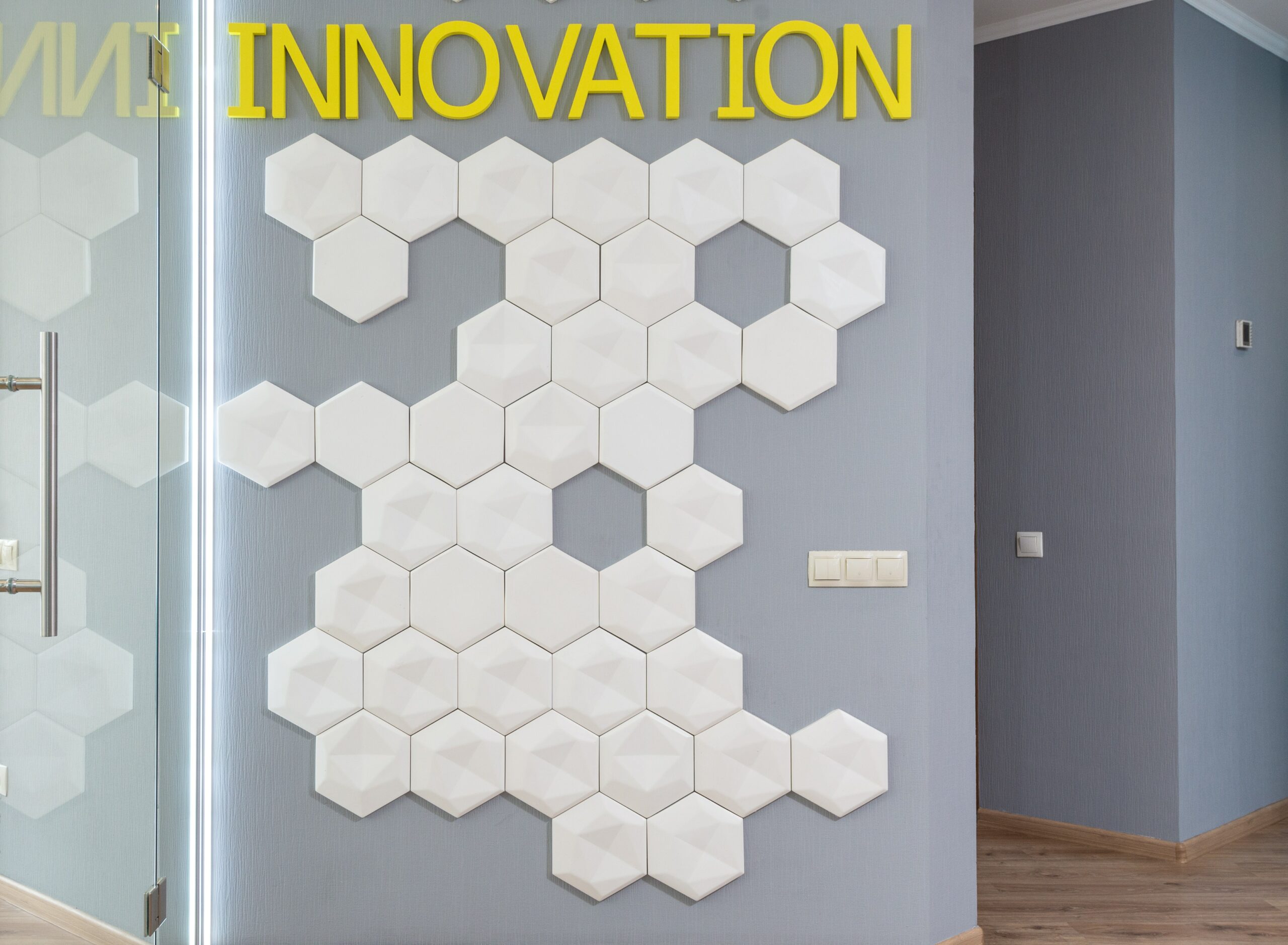Anna Kaiser and Jana Tepe are explaining the role of their start-up Tandemploy within the “New Work” movement, how companies have to rethink their employee relations and how technological change has to be connected with cultural change. They also point out the importance of responsible data use and talk about the expectations of millennial employees towards their work life.
The German job landscape is undergoing a process of change and Tandemploy contributes significantly to this change. What were the reasons for you to participate in this process and how did you come up with this exciting idea?
Jana: Until 2013 we worked in a reruitment company for the digital world. One day an application landed on my desk that was different than what I had seen before. Two women were applying for one position as a jobsharing tandem. I was thrilled and told my colleague Anna about it. Three days later we quit our jobs and started Tandemploy, a platform for people that want to share their job with a tandem partner. And for companies that are open to this new form of working.
Anna: Without realizing it, we were among the pioneers of the „New Work“ movement. Large companies were suddenly interested in New Work, not only because they realized that their previous structures are immobile, but also because they are unattractive for new talents. The deeper we delved into the topic, the clearer it became that something urgently needed to change. A professional world that only revolves around itself and exploits people instead of rekindling their creative power urgently needed a new operating system.
Jana: Until today the team has grown to 30 people. We evolved from being a jobsharing platform to developing highly innovative and disruptive software that breaks down the established structures in companies by connecting employees for collaborative forms of work and learning. Large corporations as well as medium-sized companies use Tandemploy’s Skill Matching Tool fully aware that the often-invoked change cannot come from the outside alone, but must primarily arise within the organization itself.
Which factors or trends will strongly influence the job market in the future and what opportunities will result for Tandemploy?
Anna: The changes brought on by digitalization are enormous. Due to their immense impact, these changes are also referred to as the „Digital Revolution“, in reference to the Industrial Revolution which laid the foundation for how we live today. And just like back then, there are many great achievements that come along with the digitalization, but also many great challenges. The most obvious achievement is, of course, the technological progress that allows us to work together in a completely new way, regardless of where we are – at least in theory. Just because a technology exists, doesn’t mean that everyone instantly knows how to use it sensibly. That’s why we always emphasize that a technological shift always has to go hand in hand with a cultural shift. We can’t work remotely if we still think in rigid hierarchies and don’t trust the people around us. We can’t and shouldn’t collect and process data in large amounts if we don’t know what the final goal is and whether it will really benefit our personal and professional life. We can’t develop innovative and sustainable products, while still working in outdated company structures. And we can’t recruit young, creative, digital minds for our companies, if we are still trying to press them into inflexible 9-5 grids and expect them to work to rule.
Jana: Companies have to change, and not just a little, but a lot. They should start today. A good first step is to engage in an exchange with the people within the organization and to find out what their skills, talents and goals are. Change, that happens from the inside is much easier to manage than change that is pushed through from the top down. Companies already have the most important asset that they need to shape the shift: their own employees. Most of them will want to help if they are given the freedom to. And many will take on tasks tomorrow that they can’t anticipate today. For companies, the most important thing is to create space and opportunity for exchange and continuous learning to take place. It is the best way to stay agile no matter what kind of change is coming our way. As Tandemploy we provide exactly this kind of opportunity, based on specific use cases.
Besides the advantages of Jobsharing there are also some challenges, such as a higher requirement of communication between employees. How does your concept eliminate these barriers?
Anna: Whether a job-sharing constellation works, depends largely on the tandem partners. The prerequisite is that both partners interact at eye level, trust and stand up for each other. If, for example, mistakes happen, this must be clearly communicated, and a solution must be found together. Since there are always two minds involved, the tendency for mistakes is bound to be lower than when one person has to make decisions alone.
Jana: The distribution of tasks in a tandem is very individual. Although it is obvious to divide up by strengths so that each person can work in their ‘sweet zone’, it is also valuable to work together on overarching and strategic issues, thereby making best use of the potential these smallest possible think tanks, if you so will, can unfold!
Anna: And companies have to resist the impulse to try to control everything. Job Sharing requires trust and freedom, otherwise the many advantages that the model offers will be lost. In addition, a good infrastructure is required so that the tandem partners can communicate well with one another outside the office and share company-relevant information.
Unconscious biases can affect and influence the recruiting process and outcome. Do you actively counter such biases in your algorithm? If yes, how?
Jana: One of the most important requirements for AI and data-based technology is that it makes fair decisions and doesn’t discriminate against anyone based on gender, skin color, origin, religion or sexual orientation. We prevent programmed discrimination in the development of our SaaS. For example, senior employees will never be considered a “better match” than other employees. Job sharing users can indicate that they are interested in taking on a management position in the future and therefore ONLY want to network with colleagues who already work in management.
Anna: We generally work with virtual waiting lists. For example, Onboarding Buddies will be suggested in order of registration, without any preference given to personal characteristics or job status. All users that have made themselves available as buddies, will be put in the waiting list in the order they registered.
Millennials are on the rise and they are pushing companies to evolve. From your perspective, what does freedom at work mean for a millennial employee?
Anna: Young digital minds don’t want prefabricated offers designed on the drawing board by the management. They want opportunities – onboarding, chances for development, learning opportunities, career options, etc. – that meet their needs, that they help to shape, and that they can access “on demand” according to their skills and interests. They want an environment that values both their individuality but also their role in a social structure – in the work context and beyond. A good “employee experience“ does exactly that. It is not based on offers that have been thought through to the end, but on open structures and opportunities for participation for everyone.
Many employees want more flexibility in their job and more time for family, hobbies or friends. The job should offer more freedom, but also leisure time. What does the working world of the future look like for you and do you think the concept of the „nine-to-five job“ is sustainable?
Jana: Smart companies have long recognized that flexibility and satisfied employees are not a luxury that they treat themselves to when they are being particularly nice, but rather, quite frankly, an economic necessity. It is no longer a secret that employees who are seen and valued, who are allowed to take on responsibility and who have time for things outside of work, also perform better in the professional context. Our team is the best example of this. We have abolished the 40-hour work week, all of our colleagues work flexibly in different constellations, just as it suits their lives. It works wonderfully. You just have to want it!
Has Tandemploy been successful across all demographics or does one group (e.g. older generations, etc.) stand out in particular? If so, how come?
Jana: Our software solution definitely appeals to all generations, since our very different use cases are aimed at a large number of target groups in the company. Some modules consciously combine young and old. The wish to work in a more flexible, self-determined and collaborative way exists in all age groups – contrary to the image invoked by the media, which often only focuses on the wishes of millennials and the Gen Z.
For which type of jobs is the concept of Tandemploy a suitable tool or in other words, which companies are your main customers?
Jana: In general, companies feel great pressure to change. We notice this from the response we receive. Many large corporations are already using our software to connect their employees, sometimes worldwide, and medium and small companies are also increasingly joining the trend. This suggests that an opening towards new work models is underway. The branch is not relevant here. Networking and collaboration affect everyone.
Anna: But the introduction of this technology is only one part of the big picture. It must go hand in hand with a gradual change in values within the company. If, for example, employees use our software to network and develop new ideas or to find a tandem partner, but their effort is then blocked by management, it becomes difficult – or let’s put it this way: interesting. Digitization is primarily a cultural shift, only then can technology unfold its potential. At the same time, automated matching is a good way to get started.
Your customers are large companies such as SAP and Evonik. As a start-up, how do you build and keep long lasting relationships?
Anna: We maintain very open, warm and heartfelt relationships with our customers. Aside from supporting them in the preparation and introduction of SaaS, we also offer them all of our expertise and many best practices throughout the cooperation. Every customer has a “customer happiness manager“ as a designated contact. What our customers appreciate is the cooperation at eye level according to Tandemploy‘s values and the flexibility in exploring the best solutions for the organization. This applies to large companies as well as to smaller ones.
Berlin is known as the new “Start-Up-Scene” in Germany. Is this location an advantage for your business?
Jana: Yes, without question. There’s always something going on in Berlin. You can get inspiration and new knowledge at every corner and meet exciting people. There are also great offers tailored to the needs of founders and entrepreneurs, that we have already benefited from.






